You don’t know how to ride a bike? That should not be a problem, and you should not be embarrassed whether you are an adult or a child.
Teaching your child how to ride a bike is fun and you will spend some quality time together creating new memories.
Many adults don’t get the chance to learn how to ride early in life; however, this should stop you from learning. So, if you are finally ready, now is the time, and this guide is all you need to get started.
Table of Contents
Teaching Cycling To Your Kids
Do you love cycling? – If yes, pass it to your kids. The least you can do for your ‘mini-you’ is to take them where the fun is- bike riding. Here’s how to help your babies curate childhood throwbacks by teaching them how to ride a bike.
What’s The Right Age To Teach Them?
Let your kid take his/her chance with the pavements whenever you think he is ready. However, it is a good idea for your kid to take bike-train at about 4-5 years, a time when you can rely on his balancing and coordinating skills.
Ensure Your Kid’s Safety
You understand how bumpy the first rides are, right? Although you want your kid to learn the hard way, your child still needs to feel safe while riding.
Safety Gear For Kids
The grass on the lawn might be kind on your baby’s knee and knuckle, but he still needs a helmet. Apart from that, dress your child’s knees and elbows from bruises and scrapes with protective pads.
For your information, baggy clothes and long shoelaces for a riding session are a NO!
Where To Do The Bike Lessons
Give your child two-wheeled independence from a not-so-busy place such as a park, a wide trail, or an empty parking lot. A Street isn’t a noble place for a bike lesson.
Types Of Bikes They Can Use
Choosing the bike to start your cycling training can be challenging. Here are some ideal bikes you can try out.
Start With A Three-Wheeled Scooter
A kid who’s starting with a bike can have a hard time balancing on a regular bicycle. A three-wheeled scooter is an excellent way for your child to unzip his manliness because they are easy to balance and control.
Follow With A Training-Wheeled Bike
There will be a time when your child will want to move onto a bike after falling in love with speed. However, before getting onto a real bike, give him a taste of sitting on a saddle and picking up his feet to pedal using a training-wheeled bike.
Train With A Two-Wheeled Bike
Bye-bye training wheels welcome manliness. It is now time to watch your mini-you get onto a two-wheeled bike and steer himself into tomorrow.
It doesn’t have to be a brand-new bike. You can start the training on an older sibling’s bike until he gets it.
Don’t Break The Bank
You should not spend a fortune when training your child, as there are pocket-friendly options you can turn to. For instance, you can:
Use Scooters
Who says watching your child become a ‘big person’ has to cost you every sweat when a scooter is affordable? It doesn’t have to be an electric scooter that costs a fortune- a simple plastic scooter is a ride to joy.
Borrow Balance Bikes From Friends And Relatives
No doubt, every parent wants to give the best to their little ones. However, if you can’t afford a high-end first bike for your child, borrow from friends or relatives. And, if you have older kids, use their older bikes.
Invest In A Bike But Borrow The Training Wheels
You can borrow training wheels for your child and use it until you feel he is ready to ‘graduate.’ There must be a relative or a friend with an older child who no longer uses a scooter. You can then get a bike for him when he is confident and ripe for a two-wheeled ride.
Giving Bike Lessons
Here is a manual you can follow when giving your child bike lessons.
Scooting And Gliding
When he gets comfortable in the saddle, he will want a bit of motion. For this reason, he might find himself scooting. The good parent you are should motivate him with “go, baby, go!”
And, when he starts scooting like a pro, take them for sloppy rides and make them glide naturally.
Steering And Turning
Although scooting and gliding might have come naturally for your kid, steering and turning may not be instinctual. To make them steer and turn, give them a goal to reach.
For instance, place an object away from him and ask him to squash it or steer between them.
Slowing And Stopping
As beginners, when they have to slow or stop your kid wobbles because they don’t know the correct amount of pressure to exert on the brakes. If they have coaster brakes, make him sit on the bike and hold it for them while the press on the brake.
And if it is a hand brake, make them walk alongside the ride as they hold the grip while using the fingers on the brake. They’ll learn to slow and stop the bike and build the confidence to do the same when cycling.
Make It Fun For Them
You can make it fun-filled by planning a destination target and riding on natural trails instead of basketball courts. Plus, bring friends and family on board for motivation and memory.
Bike Lessons For Adult Beginners
If you didn’t bike in your childhood, now is the time. Keep reading and learn how to pedal away.
Riding On A Flat Surface
Here are some things you should do when having riding lessons on a flat surface.
1. Look for an ideal area with a stretch of flat land with minimum traffic.

Streets and hilly sites are a no-go-zone until you are ready. The reason is, learning how to bike isn’t as straightforward as it looks. There’ll be plenty of wobbles, falls, and trials.
2. Adjust the bike seat to make sure you can reach the ground easily.
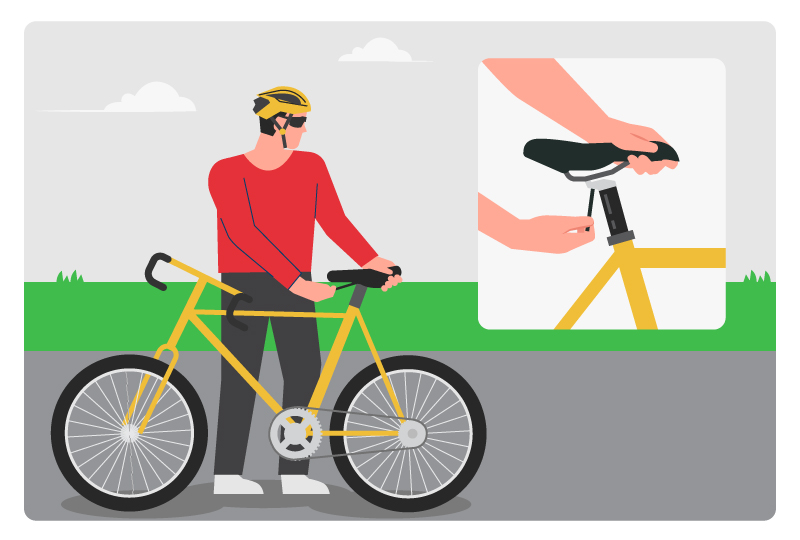
Try adjusting the bike seat to the correct height, and you’ll pedal effortlessly. You can adjust it up or down to suit our height. You can then tighten the seat when you reach the right measurement.
3. Test the brakes.
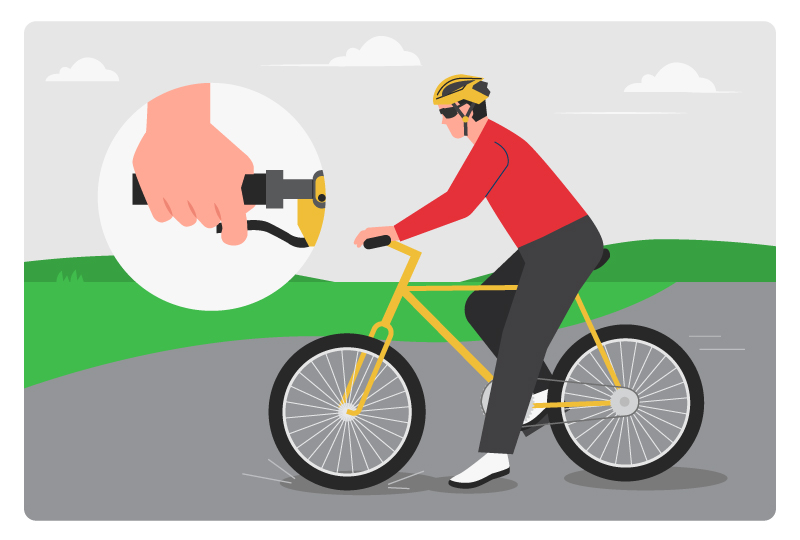
Grab the brake levers from the side to confirm if they stop the bike. You can walk as you squeeze the brakes. You’ll need them in your session, and if they don’t work right, you’ll fall hard.
4. Plant one foot on the ground and another on one pedal.

This part should be instinctual. The reason is, your dominant side will dictate the foot you place on the ground and the one for the pedal. You only have to listen to your body.
5. Start gliding and finding your balance.

After your left is on the pedal, push yourself off a bit and tuck your feet upwards onto the pedal. You should start pedaling as you maintain balance. If you tip and lose balance, you can put one foot on the ground to catch balance and steer off again.
6. Make sure your body stays still when you’re riding.
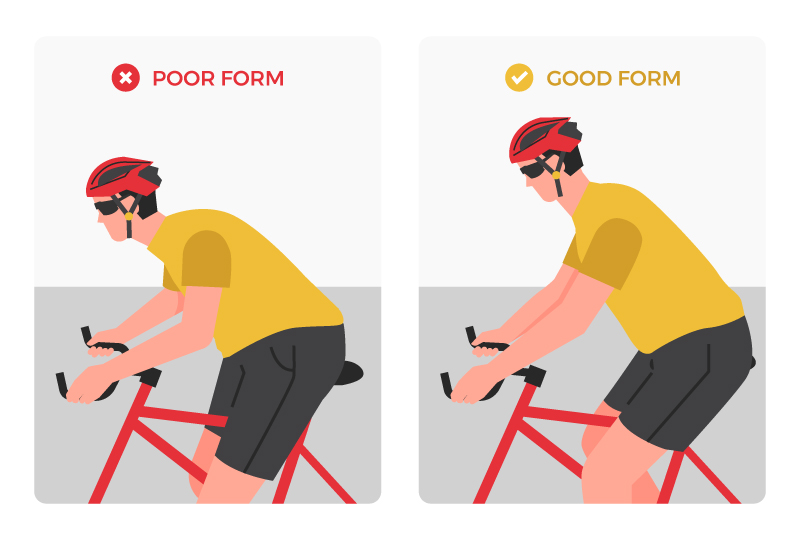
No doubt, getting into motion will send lots of uncertainty your way. And, you’ll want to shield yourself from harm and falling. However, trust yourself and stay still when riding to prevent wobbles that can lead to falls.
7. Keep your eyes straight ahead.
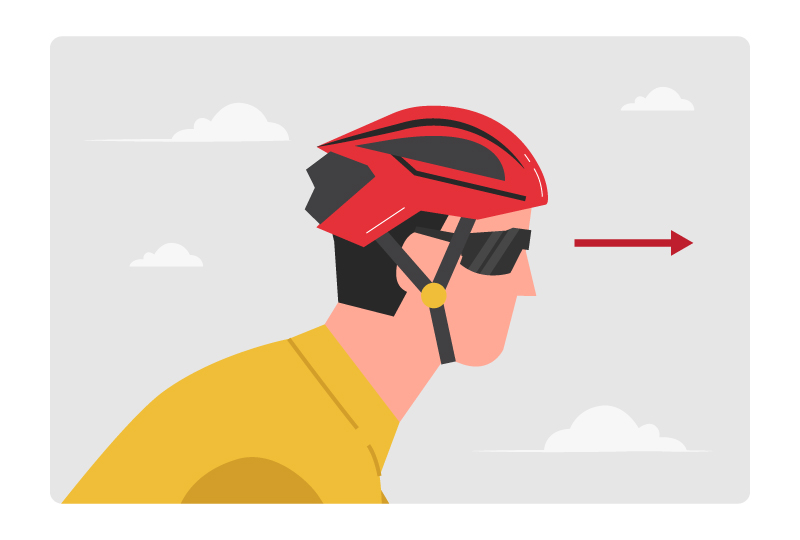
Ensure that your eyes stay on the trail. It’ll help you focus, avoid obstacles, and concentrate on staying steady on the road.
8. Practice pedaling, stepping firmly on the ground if you lose your balance.
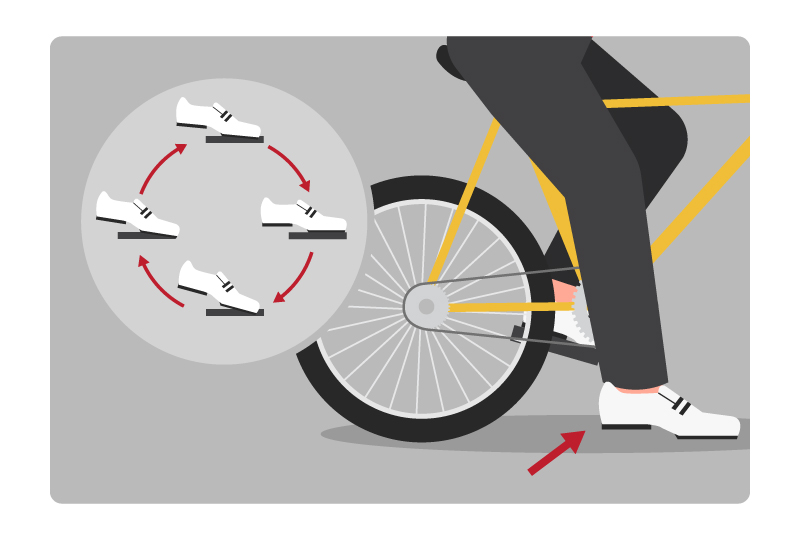
Pedaling is the essential part because it is the time you kick off motion. Start by placing one foot on the ground and the other over the bike on the upward pedal. Push off, get the foot previously on the ground onto the other pedal, and bye!
9. Practice steering, making wide turns and graceful stops.
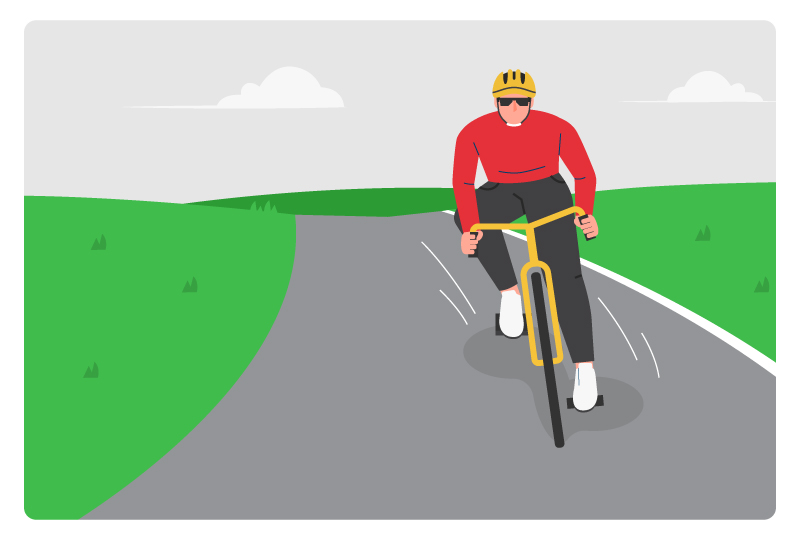
The handlebars will help you steer your ride. You only listen to your body and watch the terrain to maintain balance and change direction.
Riding On Slopes
Riding on slopes differs from riding on a flat surface. Here are the things you should do.
1. Practice gliding down gentle slopes.
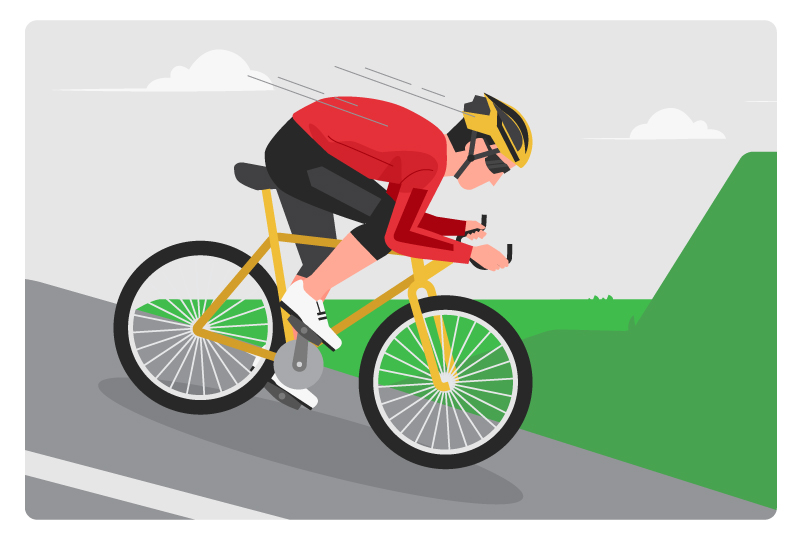
A flat surface is a great start, but a sloppy site is a place to aim. The reason is slopes call for additional work and confidence. The pride in steering downhill without stopping!
2. Brake while gliding downhill to slow down your descent.

Gliding downhill can make you speed up without intending to. Therefore, when the speed gets alarming, slow down your descent by squeezing the brakes.
3. Try steering.
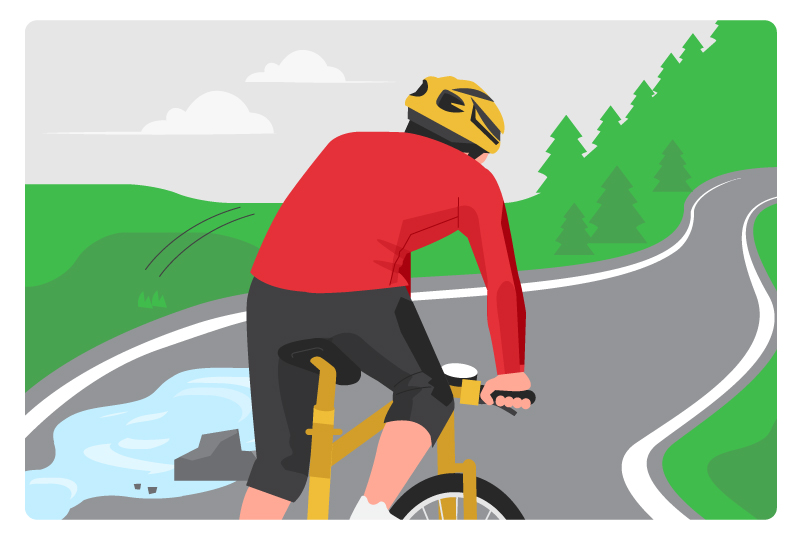
Don’t stay still now that the bike is controlling itself. Steer the bike to miss obstacles and to ensure that you are still in charge.
4. Pedal through the bottom of the slope.

Do not stop pedaling when you reach the bottom. Instead, continue pedaling and steering while practicing sharper turns and corners at the bottom.
5. Gradually progress into riding up steeper slopes.

Did you manage to beat gentle slopes? Mate, aren’t you a pro already? Anyway, you’ll know that if you progress into riding on steeper slopes and beating them too.
How To Hit The Road Like A Pro
Don’t let other road users confirm that you are a biking newbie. Therefore, to hit the road like a pro, you should do the following:
Get The Right Bike For The Right Ride
Start by figuring out your bike taste, depending on where you plan to ride. Also, chose the ride depending on the type of cyclist you are- fitness, racing, or commuting?
Learn To Handle Simple Bike Maintenance & Adjustments
Ensure that you learn every necessary skill in case of emergencies, like changing a flat tire, fixing or adjusting the breaks.
Eat And Drink On The Fly
What you fuel during rides determine your riding experience. Therefore, power yourself with bananas, peanut butter, dry fruits, nuts, energy bars, and water when on the fly. It is a great way to beat bloating and nausea.
What Type Of Cyclist Do You Think You’ll Be?
Understanding the type of biking experience you want will help you decide the bike you’ll keep. Plus, you can’t be everything at once. So, choose if you’ll like to identify with:
Mountain Bikers
If you have a thing for nature- rocks, steep slopes, across streams, and over every type of adrenaline-filled terrain, you’ve found your rightful place with mountain biking.
Road Cyclists aka Roadies
Roadies ride with a purpose, and they have the most fun. Imagine riding for health, fitness, endurance, become a better climber, or riding alongside a faster group for the thrill!
Triathletes
Here’s an excellent opportunity to combine all your hobbies into a thrill and a win- cycling, swimming, and running. Triathletes combine swimming, cycling, and running when competing to become the champion.
Track Cyclists
These are sprint enthusiasts who whiz through banked racetracks to beat other riders. It requires endurance and a thing for ridiculously high speeds.
BMXers
Do you see all those riders who go around doing tricks and dangerous spins with the BMX bikes to look cool? Is there where you want to be?
Casual Riders or Weekend Warriors
If you don’t want much but to save gas money, bond with the family, or ride around for the fun and nothing more, here’s your cohort.
Why Should You Start Bicycling?
Whatever the reason for biking, be glad you ride at all because it’s helping you in more ways than you can imagine. For instance, it aids in weight loss, improves lung health, and prevents lifestyle diseases.
Here is cycling’s contribution to fitness.
You’ll Get Fitter
Talk of every type of fitness- physical and even mental! The endurance and resistance you apply during riding burns fat to build muscles around the hamstrings, quads, and calves. Here is how you can improve your fitness levels:
Creating A Fitness Regime
If you want to tap into biking benefits, commit around three to four days of riding a week for only thirty minutes to an hour each time. It is a top-notch cardio exercise that will work on your core, back, arms, legs, and endurance.
You can take advantage of the following things when creating a fitness regime.
The Area’s Slope And Intensity
Start by pedaling slowly when you ride uphill. Then ramp up your speed as you get closer to the top. It’ll prevent you from the fatigue of starting too fast and engage your muscles the right way.
The Distance
If you are going at a rate meant to maintain good health, the recommended minimum daily biking distance is fifteen kilometers at a speed of 30km/hr.
Get The Right Gear
Gadgets like GPS, heart monitor, speedometer are necessary gears for intense cardio sessions.
Make It Effective
Focus on the ride if you want to make cycling an effecting work-out session. You can also spice it up with some variations to your routes like hills and intervals to boost endurance.
How To Keep Safe While On The Road
Safety is essential when cycling. Here are some of the things you should do to keep yourself safe when on the road.
- Plan your ride. It is good to plan for the ride beforehand. It’ll help you create an ideal route, get directions, and prepare your mind for the task.
- Don’t ride in extreme weather and road conditions.
- Be cool. Keep calm and collected.
- Stay visible.
- Don’t overload yourself with too much luggage.
- Don’t wear headphones when riding- You need to be mindful and listen to your surroundings.
- Acquaint yourself with blind spots to avoid accidents.
- Slow down before a curve to avoid collisions with oncoming road users.
Invest In Durable Safety Gear
Investing in high-quality safety gear is essential. Below are some of the gears you should have.
- Get a hardened bike lock to thwart any thief that picks on your bike for the day.
- Wear a helmet properly to keep your brains. Mate, bikers are prone to head injuries.
- Use lights or reflective to allow other road users to beware of your presence on the road.
- Cycling glasses will protect your eyes from debris.
Obey Traffic Rules And Regulations
This is one of the essential things you should do when learning to cycle. Knowing the rules and regulations keeps you safe and helps you to avoid getting into trouble. Here are some things you should learn.
- Learn bike parking regulations if you want an extra level of security for your ride.
- Know how to cross streetcars and tracks to prevent accidents.
- Find out what to do when passing or stopping behind vehicles.
- Learn how to use hand signals to communicate with other road users.
How To Make Cycling Fun
You should always look forward to the day on the road. Check out how you can make your day through biking.
Make It A Habit
If you want to adopt a habit, choose cycling. The discipline in it will help you develop a healthier lifestyle.
Find A Group And Socialize
Join a group and pedal together. The fun, the hype, and the laughter it entails make a long ride easier. You’ll always look forward to a ride!
Abide By Cycling Etiquettes
Biking isn’t about hitting the roads on a bike. It is more of taking the bike lane, watching out for car doors, avoiding sidewalks, and riding with the traffic, not against it.
Consider Competing
Add a thrill to your biking experience by showing off your cycling skills. You can get tokens from being a cycling star!
Start Cycling Today!
The only way to catch up with the greatest joy in life is if you start cycling today!

